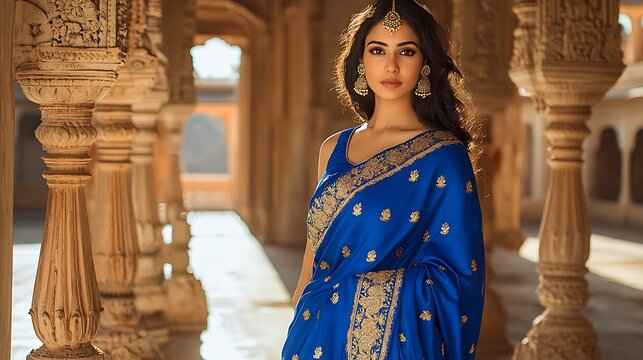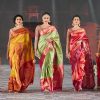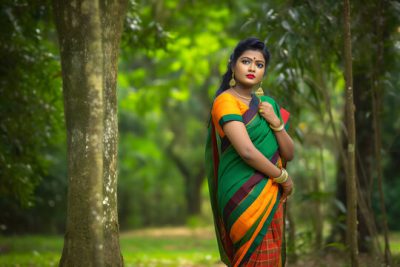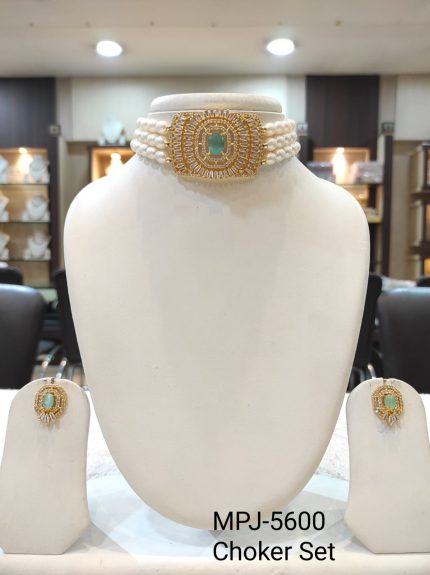
North Indian Sarees: A Symphony of Weaves and Heritage
North Indian Sarees: A Symphony of Weaves and Heritage
North Indian sarees carry centuries of history, blending Mughal grandeur with regional craftsmanship. Each drape tells a tale of trade routes, royal patronage, and the hands that wove intricate motifs into silk and cotton. From the looms of Varanasi to the artisan workshops of Rajasthan and Punjab, these sarees celebrate color, texture, and artistry.
Iconic Varieties of North Indian Sarees
| Saree Type | Origin | Key Features | Ideal For |
|---|---|---|---|
| Banarasi Silk | Varanasi, UP | Lustrous mulberry silk, gold/silver zari brocade, Mughal motifs | Weddings, festivals |
| Chikankari | Lucknow, UP | Delicate white-on-white embroidery on muslin or chiffon | Formal gatherings, summer soirees |
| Phulkari | Punjab | Vibrant floral embroidery, bold color palettes | Cultural celebrations |
| Bandhani (Bandhej) | Rajasthan & Gujarat | Tie-dye dots forming intricate patterns, lightweight cotton or georgette | Festive wear, pujas |
| Gota Patti | Rajasthan | Metallic ribbon appliqué on chiffon or georgette | Bridal events, receptions |
Regional Draping Styles
- Traditional Nivi Draping
Pleats tucked at the waist with the pallu draped over the left shoulder, creating a classic silhouette. - Gujarati (Seedha Pallu) Draping
Pallu brought over the right shoulder and spread across the chest, showcasing the saree’s intricate border. - Bengali Draping
Wider pleats with the pallu wrapped under the right arm and draped over the left shoulder, often paired with traditional jewelry.
Choosing the Perfect Saree for Every Occasion
- Grand Weddings and Festivities
Opt for Banarasi with heavy zari work and deep jewel tones to make a regal statement. - Cultural and Religious Celebrations
Phulkari and Bandhani bring lively hues and handcrafted charm ideal for pujas, fairs, and folk festivities. - Evening Soirees and Receptions
Gota Patti sarees in pastel or jewel shades elevate evening ensembles with metallic shimmer. - Daytime Gatherings and Summer Events
Chikankari’s breathable fabrics and subtle embroidery keep you cool yet elegant.
Styling Tips and Accessory Pairings
- Jewelry Selections
Kundan or Polki sets accentuate Banarasi silks. For Bandhani and Phulkari, choose oxidized silver or meenakari pieces. - Blouse Designs
High-neck brocade blouses complement heavy silk. Simple boat-neck or sleeveless blouses suit lightweight cotton and chiffon. - Footwear Choices
Embellished mojris and juttis harmonize with traditional weaves. Gold-toned heels add height and sophistication. - Hair and Makeup
A neatly tied bun adorned with fresh flowers highlights intricate draping. Warm, dewy makeup tones balance vibrant saree hues.
Caring for Your North Indian Sarees
- Washing
Dry clean pure silks and zari-woven sarees to preserve metallic threads. Hand wash cotton varieties gently in cold water with mild detergent. - Storage
Wrap sarees in muslin or breathable cloth. Refold periodically to avoid permanent creases and protect zari from tarnishing. - Ironing
Use low to medium heat. For silks, place a thin cotton cloth over the saree to prevent direct heat contact.
Where to Buy Authentic North Indian Sarees
- Local Handloom Emporiums
Varanasi’s weaving clusters, Lucknow’s bazaars, and Jaipur’s textile markets offer direct access to artisans. - Online Artisan Platforms
Choose verified sellers with transparent origin stories, customer reviews, and clear return policies. - Seasonal Exhibitions and Trunk Shows
Craft fairs and cultural festivals often showcase limited-edition weaves and bespoke collections.
North Indian sarees are more than garments—they are living legacies woven from tradition, culture, and the devotion of countless artisans. Whether you’re drawn to the regal sheen of Banarasi silk or the playful patterns of Bandhani, each saree invites you to become part of its rich tapestry. Share your favorite North Indian weave, or let me know which saree you’ll drape for your next celebration!






Add comment